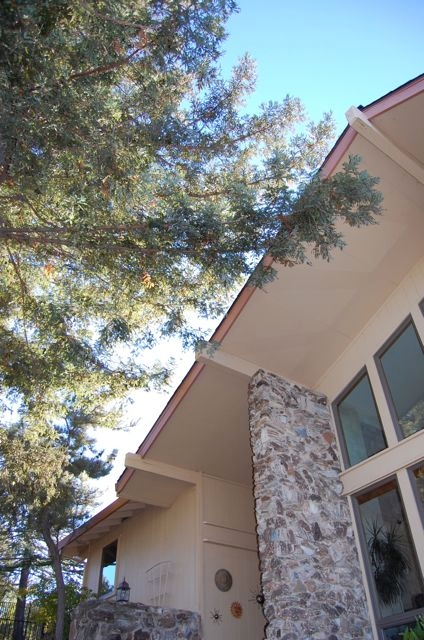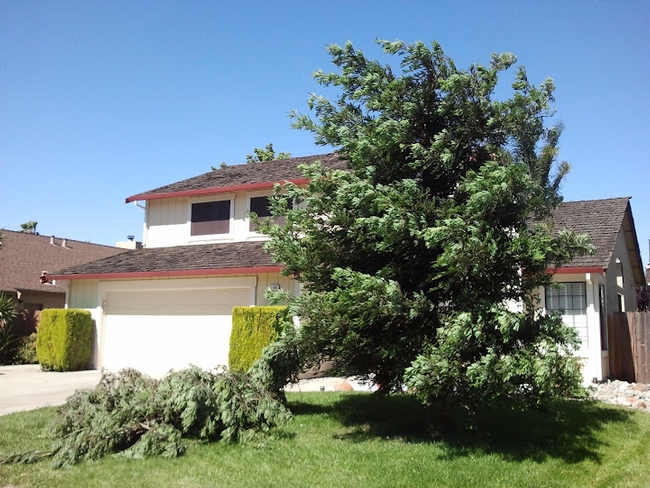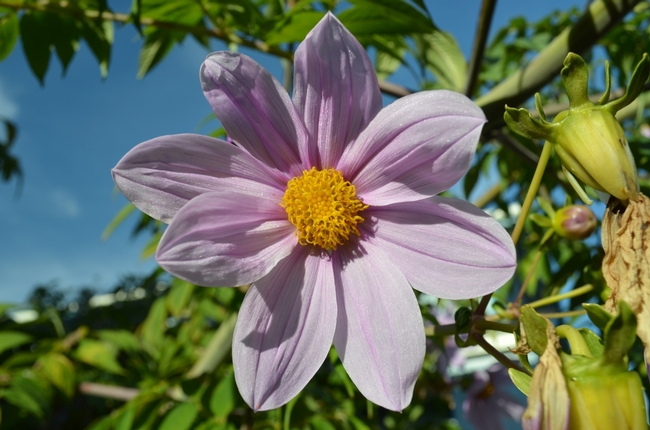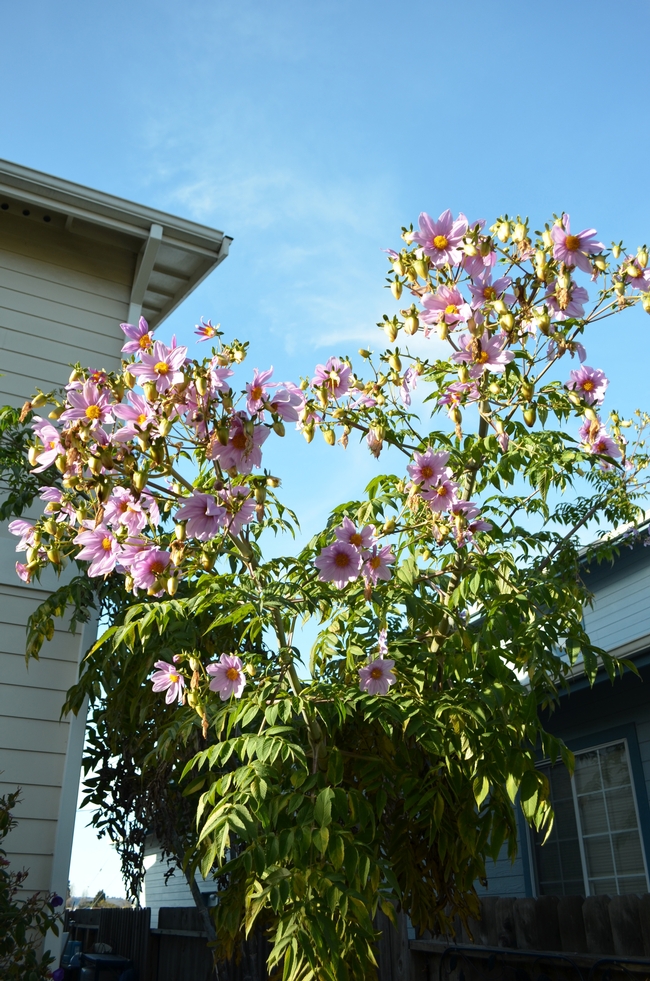Posts Tagged: wind
Grassfire-Too Close to Home
It’s been just a few days since a grassfire and embers swept over a freeway sound wall and destroyed two homes in Fairfield. In a matter of minutes, a whole neighborhood had to be evacuated, lanes of eastbound Interstate 80 were closed, and firefighters from all over the area put it in high gear and won the upper hand on this fire. A cause may never be known. Amazingly, thankfully, no one was hurt.
But this fire illustrates how quickly things can go wrong. Our very dry winter and spring have left everything super parched — the wild grasses, landscape trees and shrubs, roofs and wood siding on houses. And it’s not even fire season in California yet.
So what are you doing about it? A recent editorial in The Reporter in Vacaville (“Give credit and take measures: Fire danger is high,” Aug. 29) put it well: “The fact that this happened in a residential neighborhood well inside the city limits should be a wake-up call to everyone who lives around here. No one can do anything about the winds that drove the flames — they show up just about every afternoon this time of year — but there are precautions property owners can take to reduce the chance of damage.”
Images of the massive Rim fire in Tuolumne County came to mind. Those firs and redwoods are going up like Roman candles. We in Solano County are justifiably proud of our big, beautiful landscape trees. But when it’s this dry, are they safe to have near your house?
The Reporter editorial goes on: “Start by looking at the trees in the yard. If the foliage is touching the ground, close to a bush or hanging over the house or patio, trim it.
“And consider what is planted in the yard. At different points Tuesday (the day of the fire), the fire got a boost from oily eucalyptus and flammable Italian cypress trees.”
The editorial suggested a visit to Cal Fire’s home-safety website, Readyforwildfire.org. I recommend we all take a look, and then stroll around our homes to see what we can do to reduce our risks of losing some or all of it.

Redwood boughs hang over the roofline of this Vacaville home. Time to call a certified arborist! (photo by Kathy Thomas-Rico)
Redwood Damage
The winds of late spring are an uncomfortable reality in Solano County. They blew through on June 8 and 9, blustery, drying north winds that disrupted graduation ceremonies, outdoor weddings and picnics at the park. Broken tree branches and piles of leaves and twigs, pushed up against north-facing fences and gutters, were evidence of the onslaught.
A realist would shrug off the loss of large branches as Mother Nature’s rather brutal pruning plan. Sometimes that’s a hard pill to swallow. A friend of ours lost the top third of a redwood tree planted in his front-yard lawn. When I heard this, I immediately thought of another friend who had recently told me about losing the top portion of a redwood tree on her property. Turns out, that loss was due to lack of water, but both of my friends now face a tricky situation: What do you do with a fast-growing evergreen that loses its terminal bud leader?
Redwoods that have been topped — whether by nature or humans — tend to freak out, sprouting from masses of dormant buds just below the topping cut and under the bark. This results in an extremely fast-growing tangled mess of unstable branches where once there was one tidy and elegant trunk. These masses are weak and tend to peel away in strong winds (which we know will return in late spring).
What my friends now face is quite possibly annual pruning of those redwoods. They must be prepared to maintain the sprouts and trim any large branches regularly. And they should consult with a certified arborist to do this work.
Redwood trees are considered to be wind-resistant trees. It appears my friend’s front-yard tree, though robust and healthy in appearance, faced prior stress and had become weakened somewhere along the way. Leave it to the winds of late spring to test that stress. Maybe it’s Mother Nature’s pruning plan after all.

Late spring’s strong north winds caused this otherwise healthy redwood tree to lose its leader. The tree is located in southeast Vacaville. (photo by Ken Williams)
More Than A "Tall Novelty"-The Tree Dahlia
Sometimes a garden is something more than the carefully plotted plants for the outdoor space, the cohesive plan, the coordinated palate. Sometimes, it’s the whimsical that makes the garden. For me, it’s the tree dahlia (Dahlia imperialis) that amuses me in the late fall and early winter months. I planted it in the wrong place entirely, but can’t bear to move or replace it.
The tree dahlia is native to Central America, but it seems to survive, and even thrive, in our mild-winter region. The tree dahlia is a multi-stemmed plant, growing to 10-20 feet tall (actually, I’ve never seen one as “short” as only 10-feet tall) on bamboo-like, hollow, stems that are about 3-4 inches thick. It has daisy-like 4-6-inch wide lavender flowers with yellow-orange centers blooming at the end of the branches in late fall. I count on it blooming sometime between Thanksgiving and Christmas. Although it is frost sensitive, in my experience, it is the early winter windstorms that take the real toll on the plant. If we get a Thanksgiving windstorm, I’m likely to lose my tree dahlia before getting to see it bloom. It’s such a shame seeing the stems reach their 20-foot height and getting knocked down before they bloom!
After blooming, the tree dahlia dies back in mid-spring (around March). The Sunset Western Garden Book says that this annual dieback “relegates [the tree dahlia] to tall novelty class” instead of a “valued landscape plant.” The stems can be cut back and the plant will sprout again to put on its show in the late fall. Sections of stem with 2-3 nodes can be used to start new plants. While most gardeners will tell you to plant the sections in sand or soil to start the cuttings, I’ve left them piled up in a sideyard and they will begin to sprout without any care. The fast-growing new plants should be placed in full or partial sun, in a wind-protected area.
Years ago, I planted my tree dahlia in a shady, windy, narrow sideyard, naively thinking that the plant would get no bigger than one of those 4-inch stems. Today, it has several multi-stemmed trunks of at least 12-inch in diameter. It sprouts a fringe of sideyard-blocking leaves seemingly daily in the summer, making me feel like an intrepid explorer as I hack my way through. And then, if I forget to look up—20 feet up!—in late fall, I may miss the lavender bursts of flowers completely. It is in the wrong place entirely. But each year, at some point, I happen to look up high, catching a glimpse of this “tall novelty” in full bloom, and I can’t help but to be amused knowing that Thanksgiving is near and that spring has arrived near the roof of my house.

Flower from tree dahlia. (photos by Erin Mahaney)

Tree dahlia.

